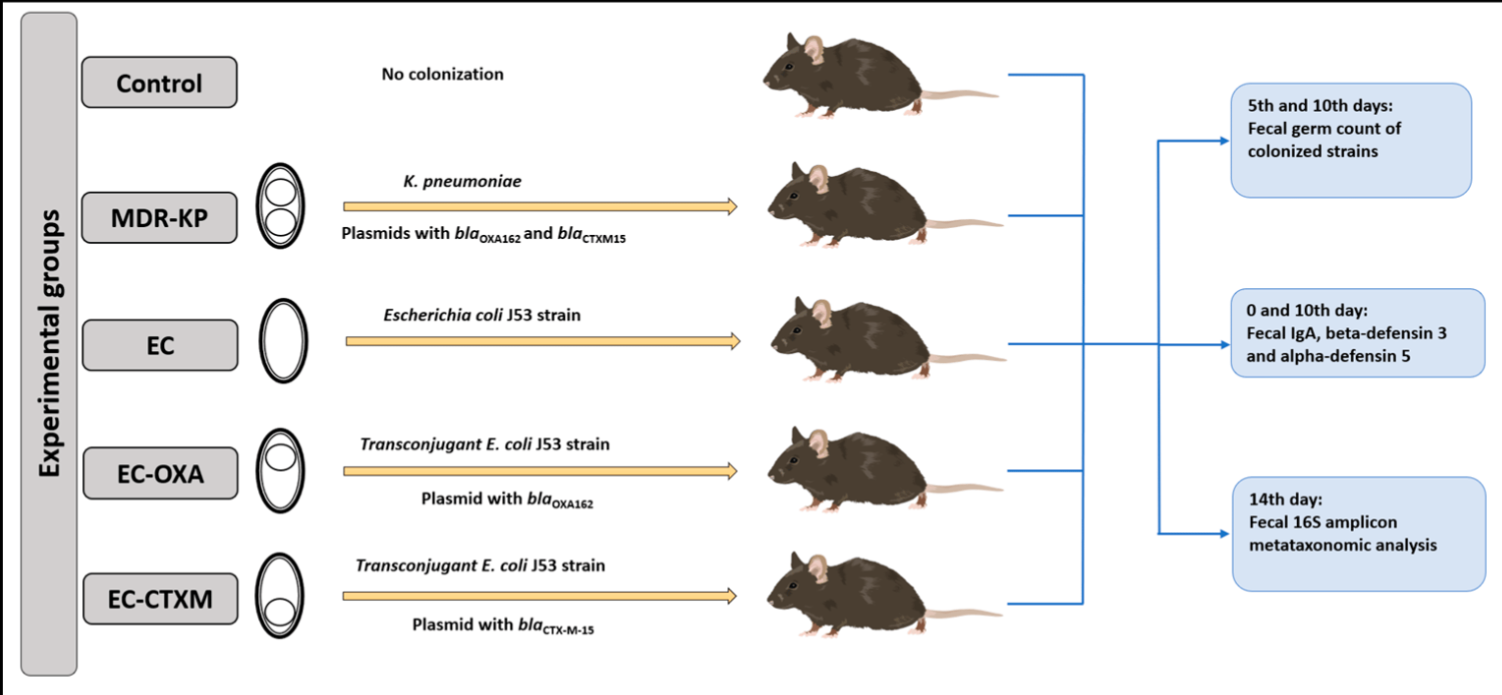The asymptomatic gastrointestinal colonization of multidrug-resistant (MDR) bacteria, such as Klebsiella pneumoniae and Escherichia coli, presents a significant challenge in clinical settings due to their potential to cause difficult-to-treat infections.
This study investigates the host factors influencing colonization using an orogastric murine infection model with a CTX-M-15- and OXA-162-producing Klebsiella pneumoniae ST15 (MDR-KP) strain, and Escherichia coli J53 (EC) along with its transconjugants harboring resistance plasmids (EC-CTXM and EC-OXA).
Methods
The study utilized an orogastric murine infection model involving C57BL/6 mice, which were pretreated with oral ampicillin. Four groups were established: MDR-KP, EC, EC-CTXM, and EC-OXA. Fecal bacterial counts were determined by cultivation, while IgA and defensin levels were measured using ELISA. The gut microbiota composition was analyzed via 16S rRNA sequencing. Colonization efficiency and immune responses were compared among the different bacterial strains and plasmid-harboring transconjugants.
Key Findings
Fecal Bacterial Counts:
- The MDR-KP group exhibited the highest colony-forming units (CFU/g), followed by EC-CTXM, EC-OXA, and EC. The presence of resistance plasmids (IncFII(K) and IncL) significantly enhanced the colonization capabilities of E. coli.
IgA and Defensin Levels:
- Fecal IgA levels increased in MDR-KP, EC-CTXM, and EC-OXA groups, with no change observed in the EC group. Beta-defensin 3 levels markedly increased in all groups, with the highest values in MDR-KP and EC-CTXM. Alpha-defensin 5 levels increased in all groups, particularly in EC.
Gut Microbiota Composition:
- The Bacteroidota phylum was dominant in MDR-KP, EC-CTXM, and EC-OXA groups, while Proteobacteria was dominant in the EC group. The Muribaculaceae family was more common in MDR-KP and EC-OXA groups, whereas the Lachnospiraceae family was dominant in the EC group.
- Fecal IgA levels positively correlated with colonizing bacterial CFU, while alpha-defensin 5 levels inversely correlated with CFUs and IgA levels.
Role of Resistance Plasmids:
- The IncFII(K) plasmid induced beta-defensin 3 production. The presence of the IncL plasmid correlated with the abundance of Muribaculaceae family members. The Lachnospiraceae family was associated with a protective role against the dissemination of high-risk clones and resistance plasmids.
Link to the study : https://tinyurl.com/24y3mvpt
